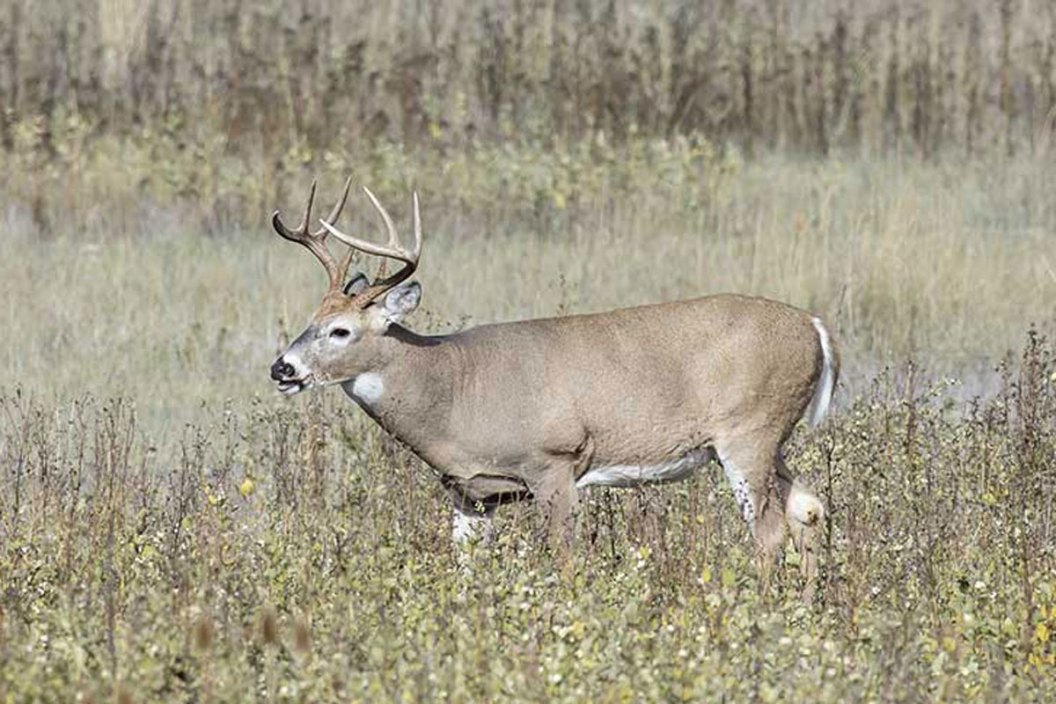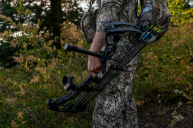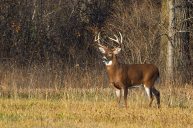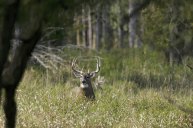Whether you're bowhunting from a treestand or lining up a good shot through your riflescope, it's always best to take your shot when a deer is standing still. However, if the buck you're after comes into sight but is on the move, how do you hit Mother Nature's pause button to create a practical shot opportunity? Surely there are plenty of hunters who were either skilled or lucky enough to drop a deer by taking a shot at a mobile deer that just so happened to cross through their shooting lane, but for the vast majority of us, knowing how to make a deer pause is paramount.
Deer are as curious as they are easy to spook. This presents an imperfect opportunity, as you can tickle their curiosity by leading them to believe something is out there, but they'll only stand for so long before sensing a threat. The key is to make them stop and investigate just long enough for you to pull the trigger. So, whatever you do, don't try and halt a deer unless you're certain you're ready to shoot.
If your stomping grounds allow the use of decoys, they can be very effective in capturing a deer's attention, but rarely will it make a big buck stop altogether. They'll often walk into your zone and gather a scent or a sight of something interesting only to walk out of range before you can fire a shot. So, while they can be helpful, the key to putting meat on the table it all in getting your surroundings to freeze, which all starts with practice.
Today, we're going to break down six methods hunters use to make deer slam on the brakes, even though a few of them may seem slightly unorthodox. Which one of these would use
Mirror

Craig Raleigh
This method is popular among veteran hunters, but I've never tried it myself. Those who stay true to old-school tactics may carry a hand mirror with them into the woods and simply send a flash toward deer they want to stop for them. This literal deer-in-the-headlights method won't always work, but it does conveniently require no noise or significant movement, which can extend the window of time you have for a shot. However, be sure to check your local regulations to make sure this is legal before trying it yourself.
Additionally, it would take a bit of finesse to truly master this technique, so it's probably worthwhile to practice this at home on deer that walk through your backyard.
Strike

Craig Raleigh
You don't have to actually strike a match to create the desired effect. You're looking to make some sort of a "chick" or a "scritch" sound that will be loud enough to catch a deer's attention, but subtle enough to not scare it off. Personally, I like to bring a turkey slate call into the deer woods with me, and I'll simply drag it across the patterned section of my stock to create just enough of a commotion.
There are a lot of ways to take the same approach, though. You can quietly mouth the work "chick" trying to mimic the sound of a match, which will likely leave a deer confused in a similar way. Or, you could even quietly snap your fingers, which produces a fairly similar sound. To keep it from being too loud, just cover your snapping hand with the other, but be sure to not overdo it, as it's easy to accidentally be noisy. Again, practice makes perfect.
Bleat
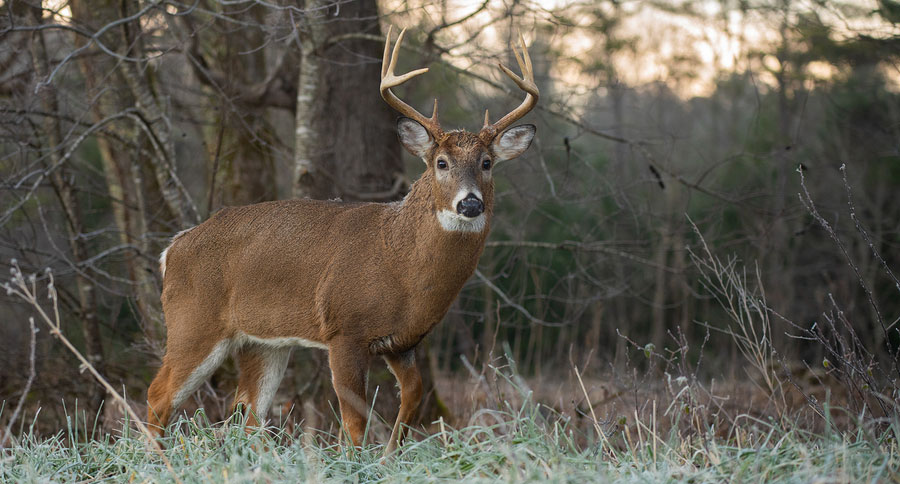
A lot of hunters out there prefer to stop a deer with a different sound than the one that brought them in, but this is a tried-and-true method that the rest of hunters have no problem using. They'll use an actual grunt tube—set to bleat—or just a bleat call that's ready to go for that opportune moment.
For me personally, it's just as effective and much easier to simply tune up my own voice and say "meh," like I'm imitating a sheep. You don't have to move your hands and you don't have to worry about accidentally being too loud, as you know how loud your voice is. Plus, there's isn't anything more satisfying than stopping and shooting a deer without the help of anyone else, or any additional equipment.
Grunt
This is where your own voice will work like a charm. If you overuse the tube at close range, you may ruin your chance at an ethical shot. Keep in mind that the deer has already come in close enough for you to make a shot, all you're trying to do is keep him from breezing through. Overcalling with a grunt could blow your cover in a hurry.
To grunt with your own voice, you ideally want to have your bow or gun in your hands with the safety off and your finger almost on the trigger. Then, with just one or two guttural vocalizations of the word "grunt" will typically make a deer freeze. The simplicity of this method has made it a favorite among hunters for generations.
Smooch
The video above was a pretty good example of how unorthodox sounds can get a deer curious enough to stop, but not worried enough to bolt. Even in windy conditions (and yes, I had to do it more than once), the big doe in the clip locked onto my position, but only to try and figure out what I was. I've smooched a whole lot of deer into doing exactly what that girl did, and filled my freezer many times doing it. I do this to deer in the yard and deer in the woods. In fact, I'd actually argue this has proven to be the most effective approach for me.
The best shot we can take on a deer is one that maximizes the kill and minimizes the wound factor, and that is a shot at a deer that isn't moving. Many of us have taken shots at moving whitetail bucks, but there is a marked difference between an animal that's walking and one that is fleeing. None of us enjoys making a mistake while deer hunting, so do what you can to minimize the margin for error.
